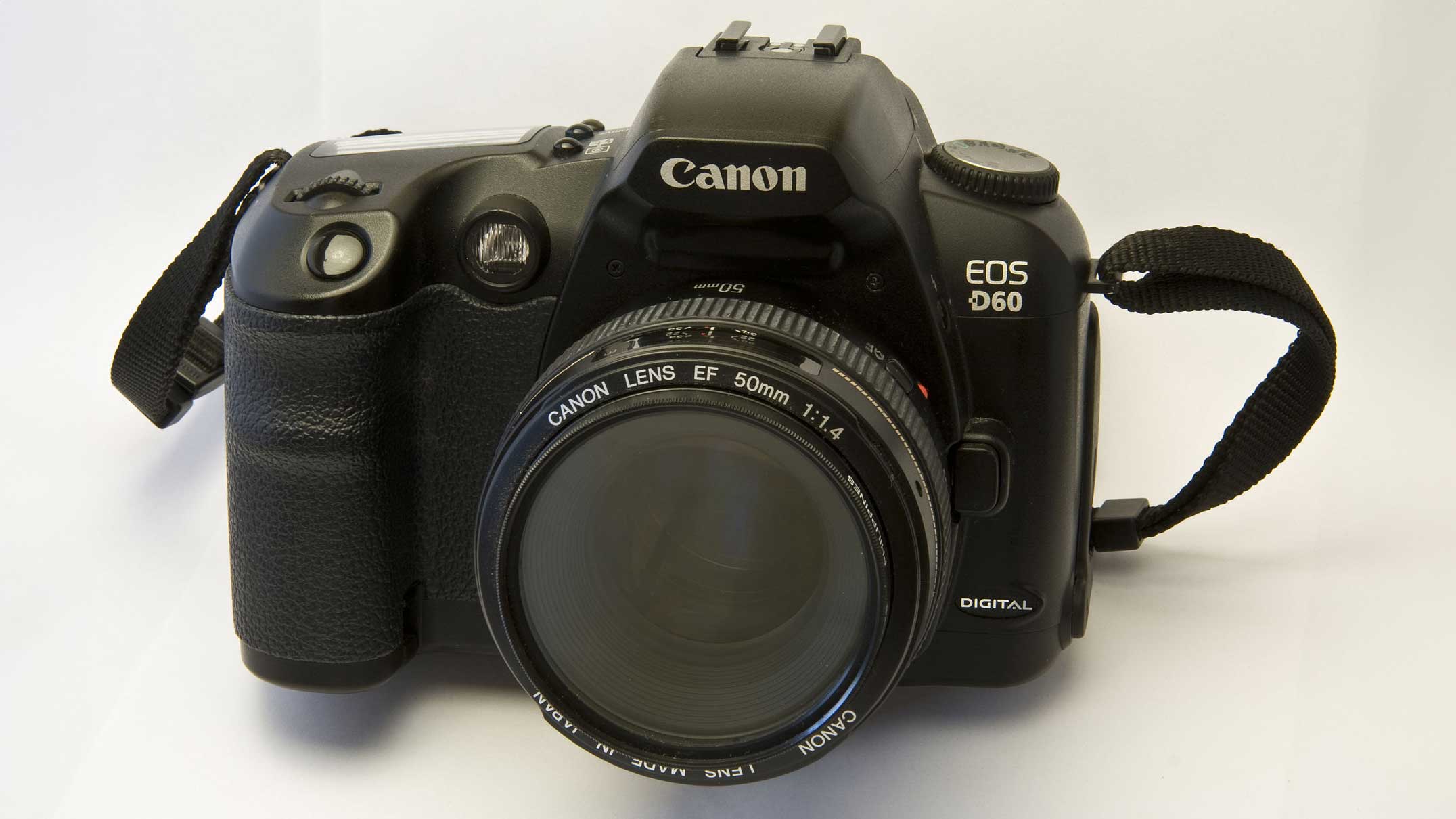

2002 was a good year for digital photography. At least, it was for me. I’d just bought my first pair of Nikon D100 bodies. I learned more about photography in my first few months with those than I did the previous several years with my Nikon N90s.
Meanwhile, in the Canon camp, there was the Canon EOS D60, a modest APS-C DSLR with a 1.6x crop factor that took Canon EF mount lenses. But was it any good? Prickly Pear Camera takes a look at the camera 22 years after its release.
6.3-megapixels of 22-year-old CMOS sensor
The Canon EOS D60 contains a 6.3-megapixel APS-C-sized sensor. This is extremely low by today’s standards, but in 2002, around 6 megapixels was quite common. The Nikon D100 bodies I was at the time using both contained 6.1-megapixel sensors.
This was Canon’s third DSLR and represented the new gateway to DSLRs for 35mm film SLR users. It was significantly cheaper than the company’s Canon EOS 1D. The EOS D60 contained a CMOS sensor, a technology first introduced by Canon with the EOS D30 in 2002.
Missing features we take for granted today
Even if we forget the technical differences and advancements of mirrorless cameras, the Canon EOS D60 seems very primitive, even compared to the last round of DSLR releases. But much of it also feels very familiar.
DSLRs figured out their form factor very early on. It was a continuation of designs from the last era of 35mm film SLRs. In fact, the Nikon D100 bodies I bought back then were basically just digital innards in a taller, Nikon F80-inspired body.
Left: Nikon D100 / Right Nikon F80 (N80 outside USA)
The Canon EOS D60 has the same basic layout and functionality as modern DSLRs, but everything improved over the years. Sensors have gotten higher resolution, with greater dynamic range and higher raw bit depth. They’ve also gotten much faster, they can capture video now, and autofocus systems saw massive gains in speed.
Video wasn’t a thing 20 years ago, and autofocus systems, while more advanced than their 35mm counterparts, was still pretty basic. Nikon’s 3D autofocus led the way back then, even though they’re lagging a little behind the competition lately. And AI wasn’t a term that anybody used outside of sci-fi movies and TV shows.
Just as good today as when they were new
Despite all of those new improvements in recent cameras, those old DSLRs can still take excellent images in the right hands. They have a lot of limitations compared to today. The lower resolution means less latitude for cropping in post.
Most DSLRs back then, even those with CMOS sensors, had relatively low limits when it came to ISO. Even if the dial went higher, cameras in 2002 weren’t really designed to be taken above ISO400 – a few exceptions weren’t terrible up to ISO800.
But in the right conditions, you can still get some fantastic images from them. Even today. And given that many images today are simply posted to social media, those 6-megapixels aren’t going to make a bit of difference to the viewing pleasure on a computer or smartphone screen.
The Canon EOS D60, like most DSLRs of the day, had a tiny rear screen
I think probably my own biggest complaint about these old cameras is the tiny displays on the back. Even at the time, they didn’t feel very great to look at, especially in bright conditions. At best, you could see if your composition was sort of ok, but that was about it.
I still have about a dozen DSLRs in my collection from over the years. Most of them are relegated to timelapse duty these days. Do you still use a DSLR as your main camera?






